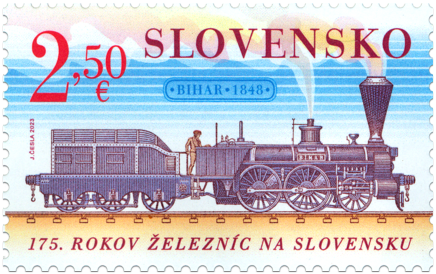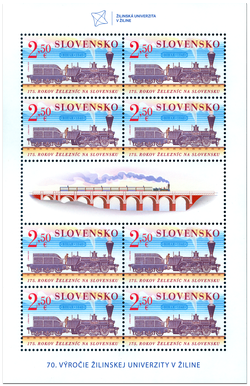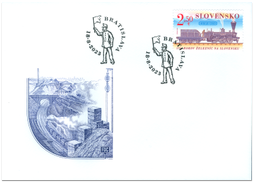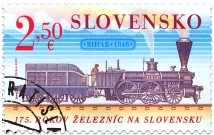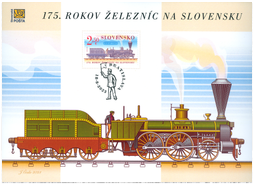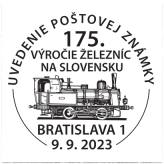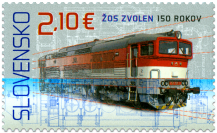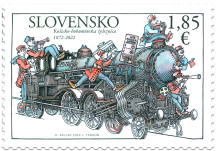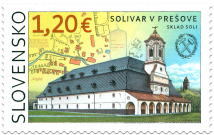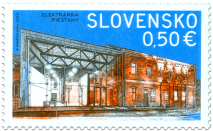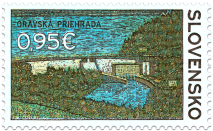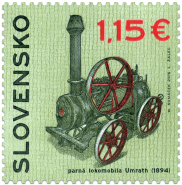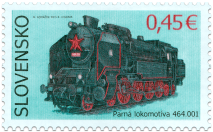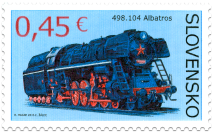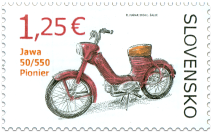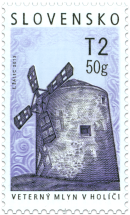798 Date of issue
18.08.2023 Face value
2.50 € Sell price
2.50 €
The idea for the first railway in Slovakia was closely connected with the intention of Baron Rotschild to connect Vienna and the salt deposits in Galicia (Poland) by rail. Rotschild gained approval for the construction of the main line on 4th March 1836, and as soon as three days later, on 7th March 1836, he submitted an application for a permit to construct a branch line from Deutsch Wagram via Marchegg to Bratislava. Later, his plan changed and the branch line to Marchegg was ultimately connected to Gänserndorf. The layout of rail line to Bratislava was also not clear in the beginning. On one hand, the representatives of the Emperor Ferdinand Northern Railway, who built and subsequently operated the main rail line from Vienna northwards, first planned that after the line crossed the Danube and the provincial border at Marchegg, it would continue on through Devínska Nová Ves and Devín along the Danube, and then up into Bratislava city centre. On the other hand, a consortium led by Baron Sina was also interested in the construction of a line to Bratislava to provide a connection between Vienna and Győr, along the right hand bank of the Danube with a branch line to Bratislava. The consortium was granted approval to begin construction works in February 1836, and on 2nd January 1838 they were also granted a concession to extend the route from Győr through Pest to Trieste; on 17th March 1837 a consortium led by the banker Móric Ullman von Szintányi was also granted approval to begin preliminary works on the track from Marchegg to Bratislava. This confused situation was resolved by a postponement that lasted several years, mainly due to the financial problems of the involved parties. A change for the better took place in 1844, when on 24th January the Hungarian Central Railway charter was approved, and on 16th May they were granted a concession for the construction and operation of a railway network from the provincial border through Bratislava, Nové Zámky, Pest and Debrecen, and further on towards Arad and Oradea, with branches to other towns. As to the route, ultimately the Marchegg – Devínska Nová Ves – Lamač – Bratislava route was chosen, as a route along the bank of the Danube into the centre was no longer possible due to the dense built-up areas in the southern part of Bratislava.
The construction of the route, which was ordered from the experienced builder, Felice Tallachini, by the Hungarian Central Railway, started with a 474m single-track wooden and stone bridge over the River Morava, this was followed by a 215m long cut close to Lamač, the Red Bridge, a 17m high brick structure with nine arches and finally a dual-track tunnel of 703.6m in length. The Red Bridge and the tunnel were the first structures of their kind in the Kingdom of Hungary. The Devínska Nová Ves, Lamač and Bratislava stations with 21 guard houses were built along the route. Bratislava station was built as a dead-end station in the area of the so-called Ursuline Gardens, in the north of the city on a soil embankment, constructed using the waste soil from the tunnel construction. The first trial run took place at night on 9th August 1848, and the first passengers were taken on 20th August 1848 by a ten-wagon train hauled by the Bihar steam engine, which is depicted on postage stamp. The route was operated by the Emperor Ferdinand Northern Railway. Throughout the construction of the line the Hungarian Central Railway was already struggling with financial problems which led to the track being sold. On 7th March 1850 it was bought by the Austrian state, who included it in the network of the Austrian South-Eastern State Railway.
Michal Tunega
Show less© 2024 POFIS - Postal philatelic service. All rights reserved

